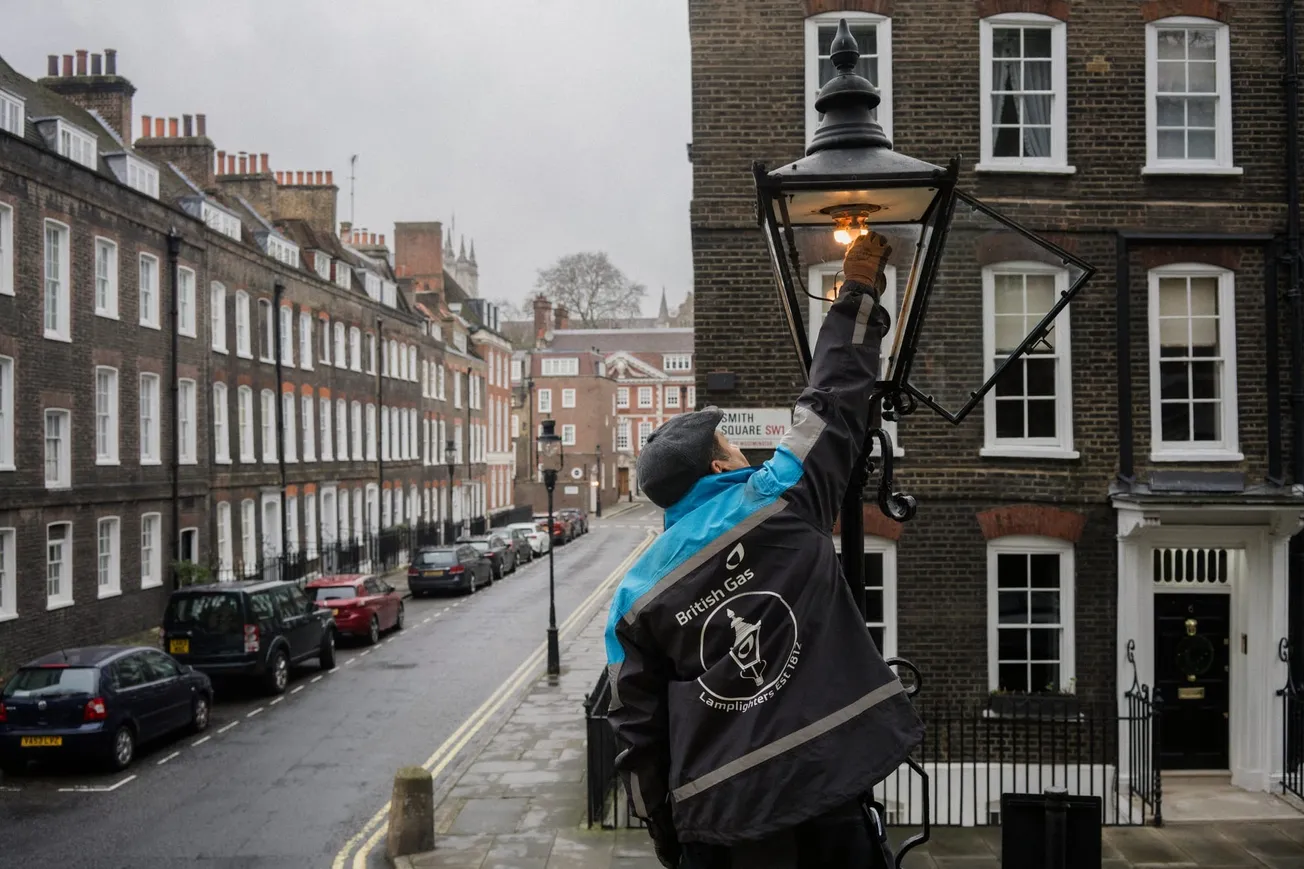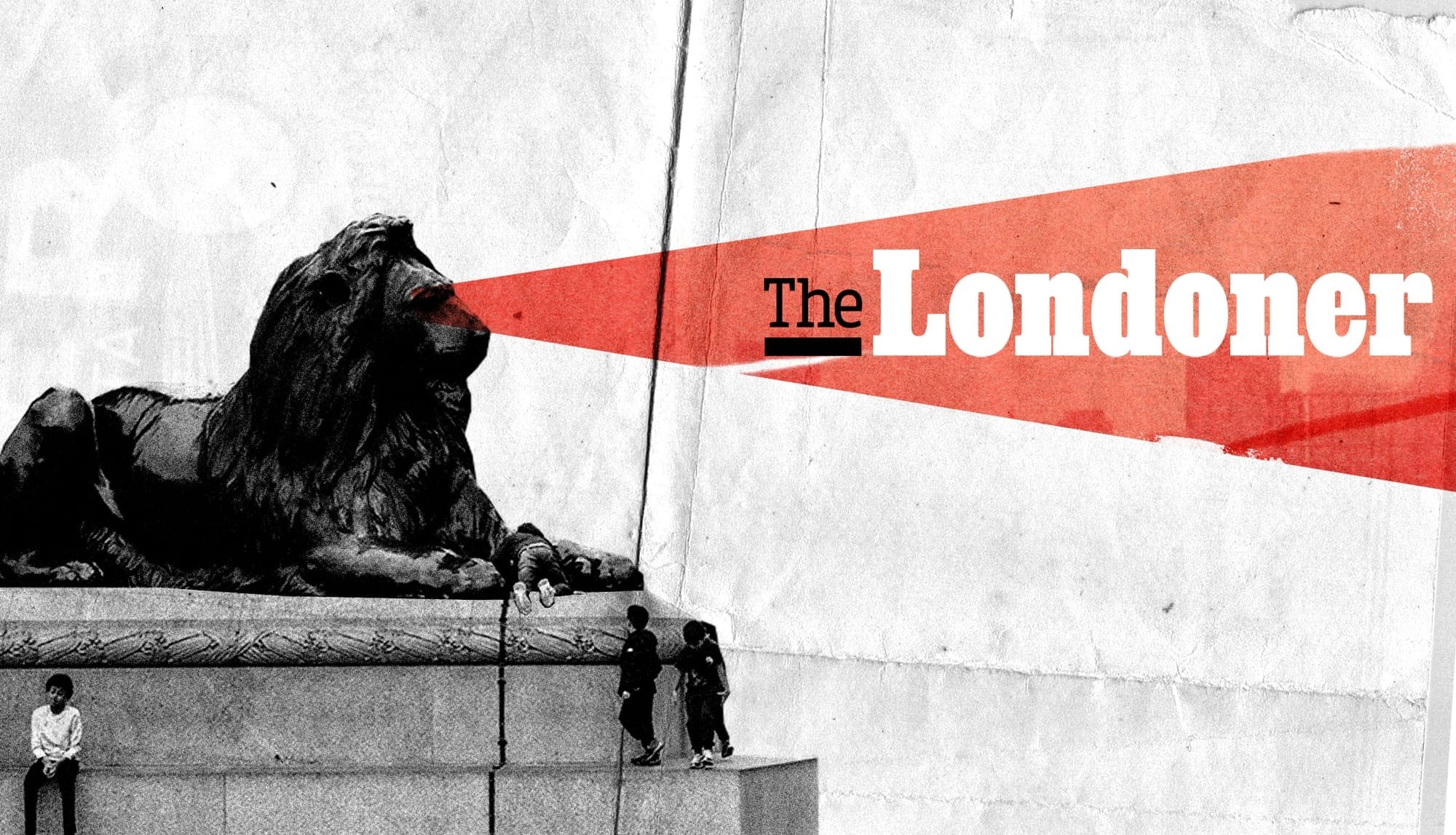When Aran Osman switches on the gas lamp in front of us, the flame suffuses the new mantle he has installed, causing it to briefly flare, numinous and ecstatic, like a Byzantine halo. My photographer and I gasp, giddy; it’s strange to be so near a real flame in London, I suppose, as well as to see something still controlled by somebody’s hands.
One of London’s five remaining lamplighters, Aran is taking us on a tour of his duties around Westminster, where 270 of the capital's 1,300 surviving gas lamps are located. In 2021, Westminster Council announced their plans to convert the borough’s remaining gas lights to replica LEDs — and outrage swiftly followed. The London Gasketeers, co-founded by Westminster residents Luke Honey and Tim Bryars, launched a concerted campaign that resulted in the plans being dropped and the majority of the gas lamps listed by Historic England. But their work isn't finished — Aran tells me there are concerns that the lamps in the Royal Parks (owned by the Crown and outside of the council’s jurisdiction) could still be in danger of being replaced by electric facsimiles.
Go back 30 years ago, even 20 years ago, and the capital was, for the most part, drenched in orange. This was mostly the result of sodium vapour lamps, which were used for street lighting throughout the latter half of the 20th century, or incandescent bulbs. The glow these give off is that of a sun about to slip below the horizon, mellow and mournful and beautiful, a sustained note in a jazz song. Think of the front cover of Bowie’s The Rise and Fall of Ziggy Stardust and the Spiders from Mars, the singer bathed in the tangerine glow of Heddon Street like a character from a noir, or the Catherine wheel of high-rise windows in the cover for The Streets’ Original Pirate Material. In the popular imagination, London was amber and ambient, a city seen through a pint glass, woozy orange lights peeping through fog. It was literary, cinematic even. Yet this is changing — has changed — and with it, so has the character of our city.
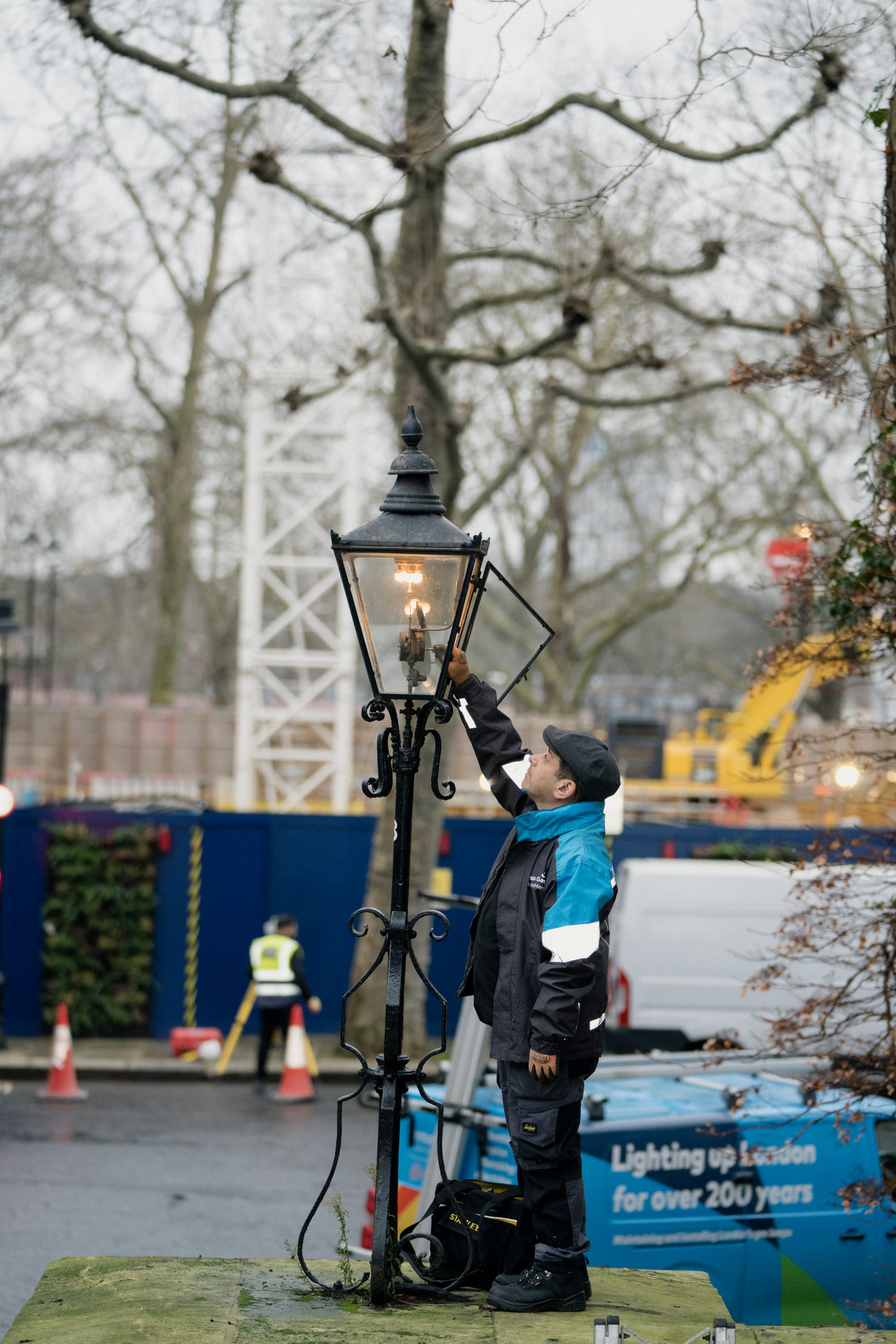
For centuries, millennia even, the night-time city was dark. Very dark. It was the kind of darkness that transcends mere aesthetics to become, above all, felt; a tactile darkness, dense and luxuriant, soft and close against the skin, like an animal’s pelt. Perhaps you’d have a torch to guide you, but it would be sooty and inconsistent and, besides, merely a needle flash in the vast, black fabric of the city. There was only the moon to guide you, then, yet often it would be covered by clouds, by the buildings leering drunkenly over the alleyways — when it disappeared, you would be subsumed by that darkness once more.
It’s hard for us to imagine now, but up until the invention of public street lighting, London was often completely, impenetrably black. As historian Johan Huizinga wrote in 1919, “The modern city hardly knows pure darkness … anymore, nor does it know the effect of a single small light.” Darkness wasn’t just a consequence of technology, or the lack of it, but also of political will: in 1285, for example, Edward I introduced a legally enforced curfew, in place for hundreds of years thereafter. In Matthew Beaumont’s Nightwalking: A Nocturnal History of London, the author explores how London’s night was for centuries categorised as inherently criminal — not to mention sinful — and curfews functioned as a way to police its less desirable populace.
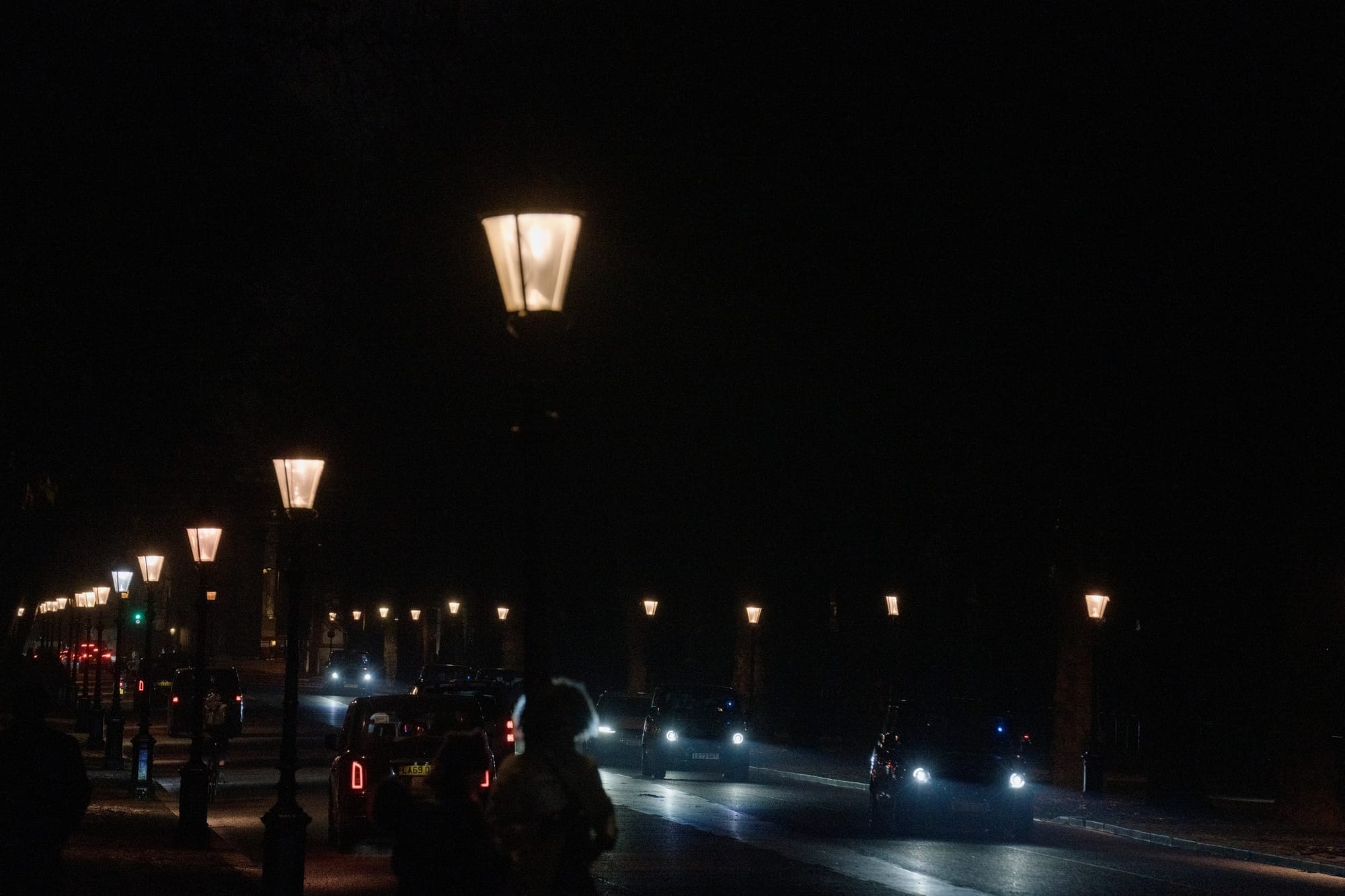
London has always had an uneasy relationship with its darkness. It is not — to borrow a phrase I’ve heard so many times recently that I’ve grown to loathe it — a ‘24-hour city’, if by what we mean by that is that there are myriad places to eat and drink and dance until the next day begins. But in many ways, the true form of London, genuine London, can be seen only under the cover of darkness: the market traders, the clubbers, the fast food workers, the cabbies, the drunken pub-goers, the cleaners, the tourists, the plongeurs and the chefs and the restaurant punters. London at night is both the cleaner sat at the back entrance of the office block, cigarette flaring in the blackness like a Perseid, and the opera attendee sibilating through Soho in velvet and silk. It’s only at night that you see all of London, rich and poor, working and revelling, all abroad in a city both asleep and finally awake. “Cities, like cats, will reveal themselves at night,” wrote poet Rupert Brooke.
In many ways, London first became London, in a sense we’d even vaguely recognise, when oil-powered street lighting was first introduced to the city in the late 17th century. Despite a squabble between patent-holders, oil lamps were quickly installed, much to the protest of the Tallow Chandlers’, the Tin Plate Workers’ and the Horners’ Companies, who crafted candles and lanterns. But their London, one lit for some long by shuddering flame and weeping tallow, was at an end. In 1690, the city produced its first lighting report: ‘New Lights’. The new street lamps, they enthused, created “such a mutual reflection, that they all seem to be but one great Solar-Light”. It’s then that the curfew became obsolete — and the character of the city changed forever.
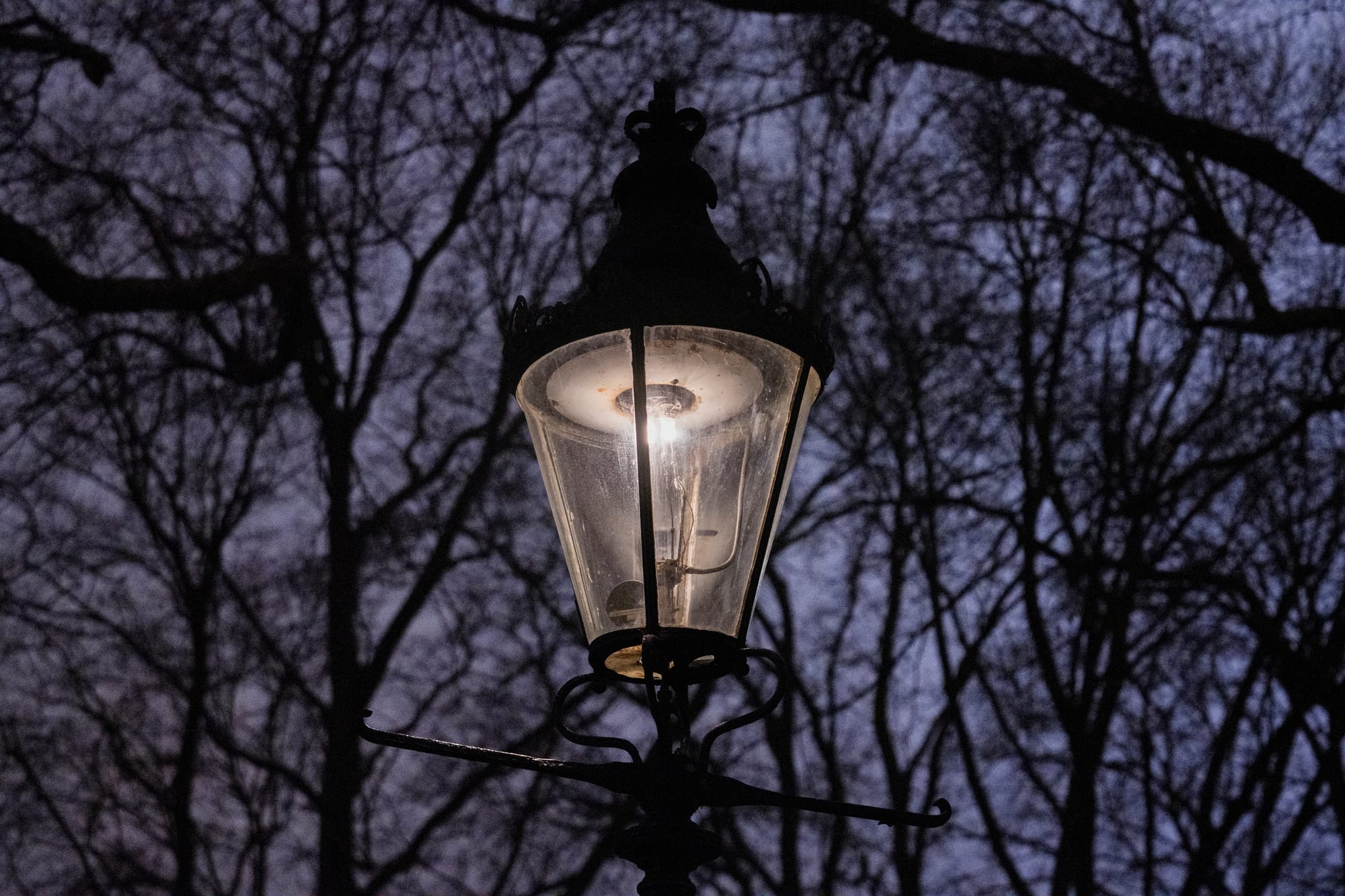
Streetlights allowed for the advent of mass consumerism, for the first true shopping districts of the capital. When German novelist Sophie von La Roche visited Oxford Street in 1786, she wrote home about “a street taking half an hour to cover from end to end, with double rows of brightly shining lamps … this street alone contained as many lamps as the whole of Paris, so that the scene, with shops open till ten p.m. and brightly lit, deceived the Prince of Monaco into believing all this brilliance in his honour.” La Roche spoke in depth about the goods on offer; the dawn of window shopping had begun.
The first gas lamps were unveiled in 1807, on Pall Mall, and by 1823 more than 200 miles of streets in London were lit by almost 40,000 lamps. But by 1878 electric lighting had been installed along Victoria Embankment and Holborn Viaduct; the sudden preponderance of electric street lamps was enough for Robert Lewis Stevenson to term them “a lamp for a nightmare!” and declare, in 1881, that they “should shine only on murders and public crime, or along the corridors of lunatic asylums”. Over the next few decades, the electric lamp would begin to claim dominance — particularly after the world wars — and a city wide-eyed and cyan-sparked and crackling with kinesis, 24 hours a day, was born.
Aran has a ‘British Gas Lamplighters’ branded van and jacket — it was his idea, he tells us, to have a distinct logo — and, with his tweed flat cap pressed firmly onto his head and his ladder under his arm, looks like a 2024 approximation of a Victorian workman, albeit one who used to be a pirate radio DJ and jungle MC. A Bethnal Green lad, he became a lamplighter five years ago when the original team retired, but he’d been helping them out, learning their craft, for years beforehand as a British Gas boiler repairman in Westminster (a job he still does, when he’s not caring for the lamps).
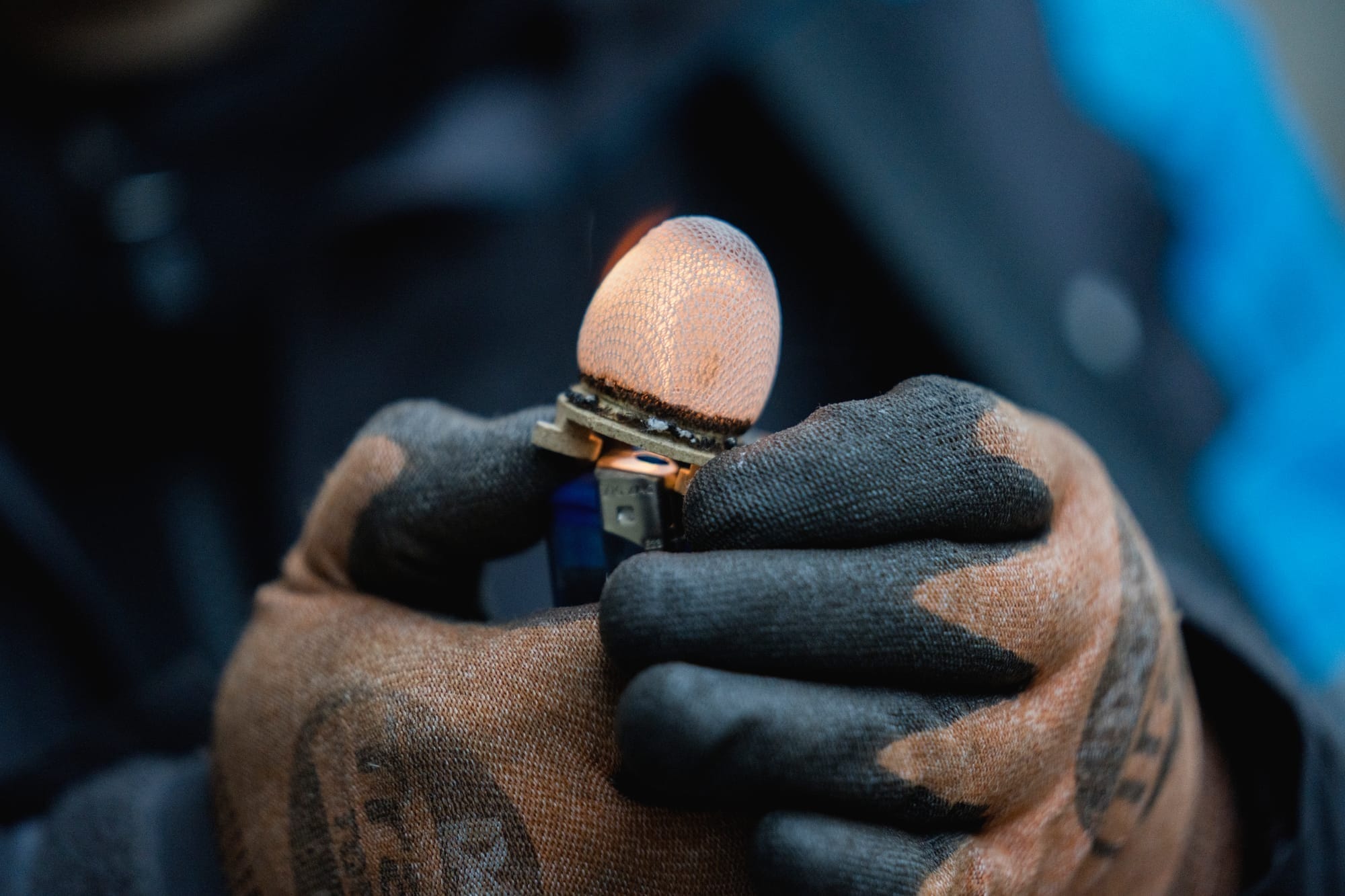
Inside each gas lamp is a Horstmann mechanical clock, which ensures they illuminate and extinguish at the correct time each night. Aran and his co-workers are responsible for winding these clocks every two weeks or so, as well as caring for the lamps, making repairs, cleaning the glass and changing worn-out mantles. Coaches and buses, he tells me, often cause damage. “I come over and fix them,” says Aran. If “the basket’s smashed, I’ll put a bit of glass in.”
There are three main types of gas lamps: the storm-proof Rochester, a raindrop-shaped sphere of glass that produces shadowless light; the Grosvenor, a conical lantern with a crown of delicate iron detailing; and the Windsor, an inverted, flat-topped pyramid that quickly became the most popular model. But there are one-offs, too. Aran points out a lamp hanging over the back entrance to Westminster Abbey in Dean’s Yard and notes, with some satisfaction, “That’s the only stained glass one”. (Dean’s Yard is also home to London’s oldest gas lamp, previously an oil lamp.)
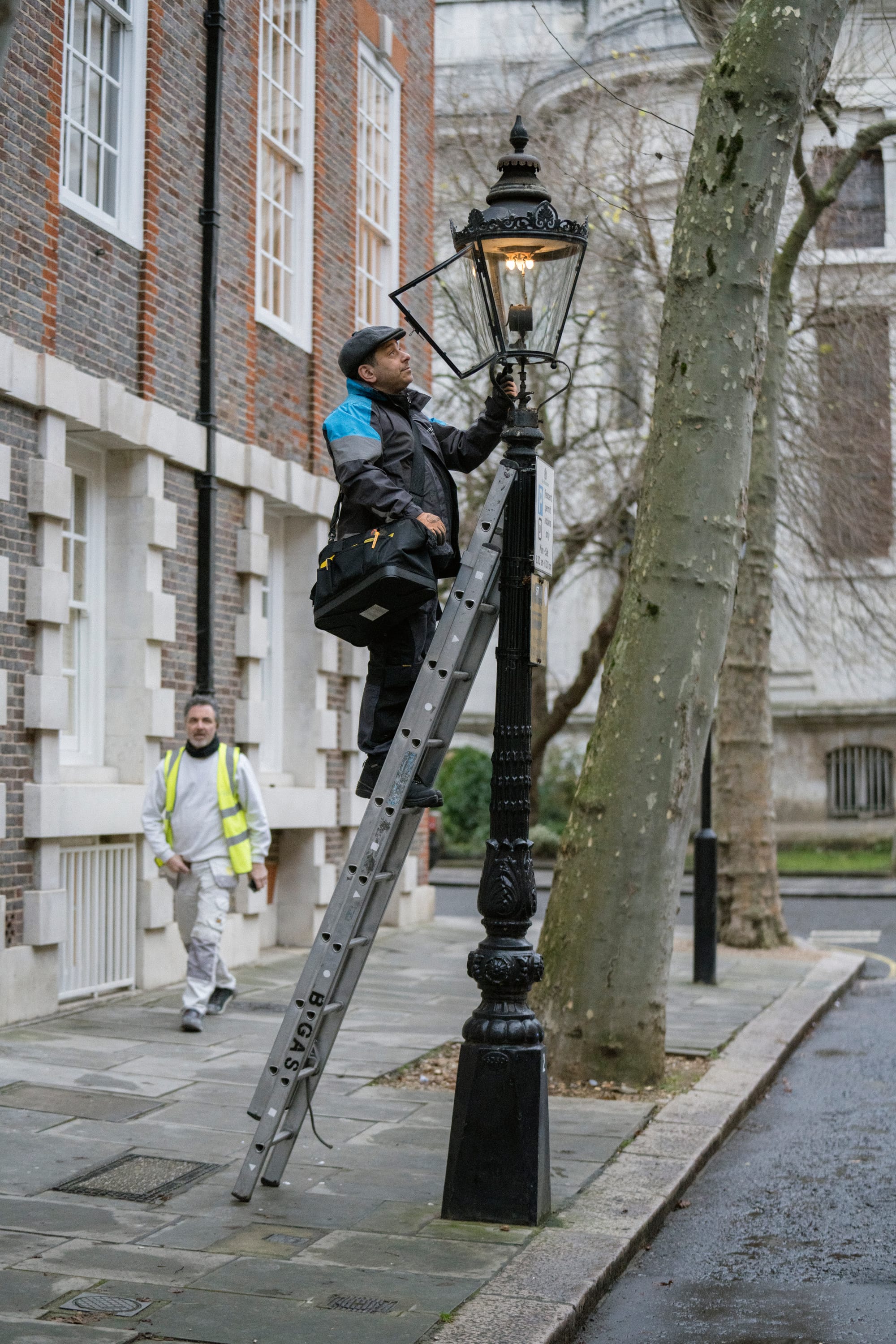
We drive to Smith Square, a collection of elegant, early Georgian townhouses arranged in a stately quadrangle around a baroque church, where several lamps are positioned. Aran knows all of these streets intimately, navigating around them more by muscle memory than by conscious thought. The residents of the square — which include new reality TV star and controversial former politician Jacob Rees-Mogg — are enthusiastic champions of the work Aran and his co-workers do. “No one wants LEDs outside their house,” Aran says. “We’re mad to change these for LEDs. They changed them in St James's Palace, half of them, and it’s just absolutely ruined it. It’s too bright. It’s a white light; it just looks blue there now.”
He understands that brighter lights are needed for main roads, but the gas lamps of London’s parks “aren’t for where people drive”. But Aran insists they still have a practical use. “Orange always cuts through bad weather as well. If you have bad weather, like storms and stuff, you can always see an orange light.” As Aran polishes the glass, I look into the lantern again; the flame has settled now, and flutters over the mantle, tremulous, like a moth’s wing, like a living thing. The lamps create an atmosphere, he says, a kind of storybook enchantment: “They guide you where you're going.” Yet the idea that London's lights could or should serve any purpose beyond the utilitarian or commercial belongs to a fight that has already been lost.
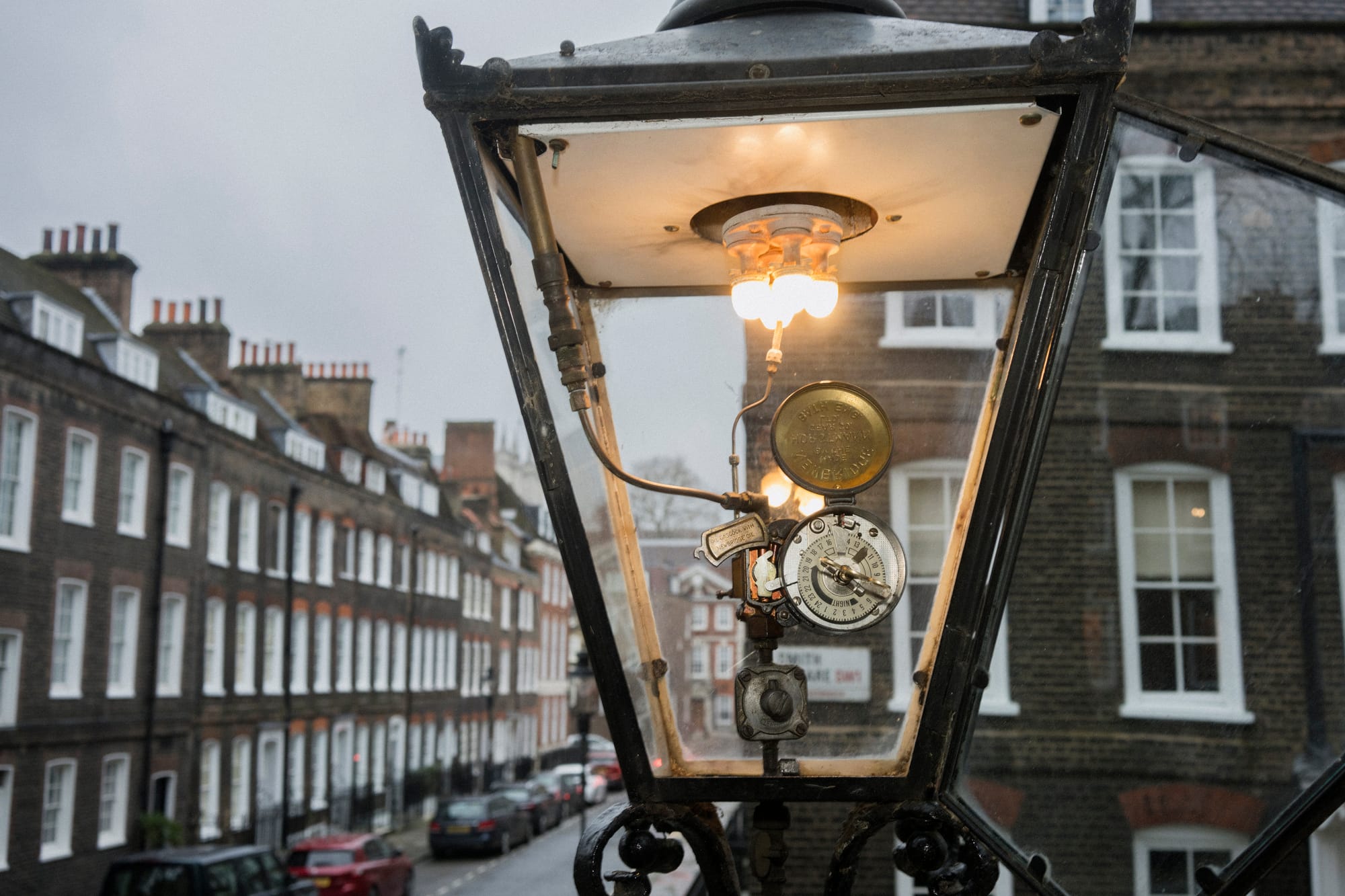
The soft glow of the gas lamps is an anachronism in a city that is continually getting brighter. Even when there are few people around, the lights of present-day London’s screens and stores and street lamps maintain a paranoid, watchful luminescence, scleral-white and jittery with aspartame. Walk through any district of London after dusk — inner or outer, busy or quiet — and you’ll begin to notice the texture of the light, the way it seems to define the area it contains: the dental-drill shine of the City offices, for example, or the Lurex sparkle of Covent Garden. It isn’t just the planned features — the lights designed to illuminate pavements and roads and bus shelters and Tube stations and crossings — but the ones that seem more mutable, too — those of shops and cars and buses and phones and adverts and people’s houses. The lights of our city can be different colours: soft gold, phosphorescent blue and, occasionally, a stuck-out tongue of neon red.
Now is the age of blue light. It’s the dominant mode of our private lives, the basis of our phones and laptops, and now it’s the dominant mode of our public ones too, our streetlights and car headlamps and advertisements. The advent of LEDs (light-emitting diodes) has transformed the way we interact with the world, and how that world interacts with us. LEDs are far cheaper and far brighter than the original incandescent bulbs they replaced. They also contain much higher levels of blue light, which is what makes them feel cold and harsh.
Recently, I looked at two photographs of London taken from the International Space Station. In one from 2016; most of the city was still gold filigree, with a small area of white light where the very heart of the City stood. The other was from 2019, by which time the majority of the capital’s lights had turned that same cold white, like hoar frost. London is far from the only city where this is happening; in 2014, it was reported that Los Angeles’ iconic orange streetlights would be switched to blue-white LEDs (it was suggested that, when they appear on screen, the colour could be fixed in post-production).
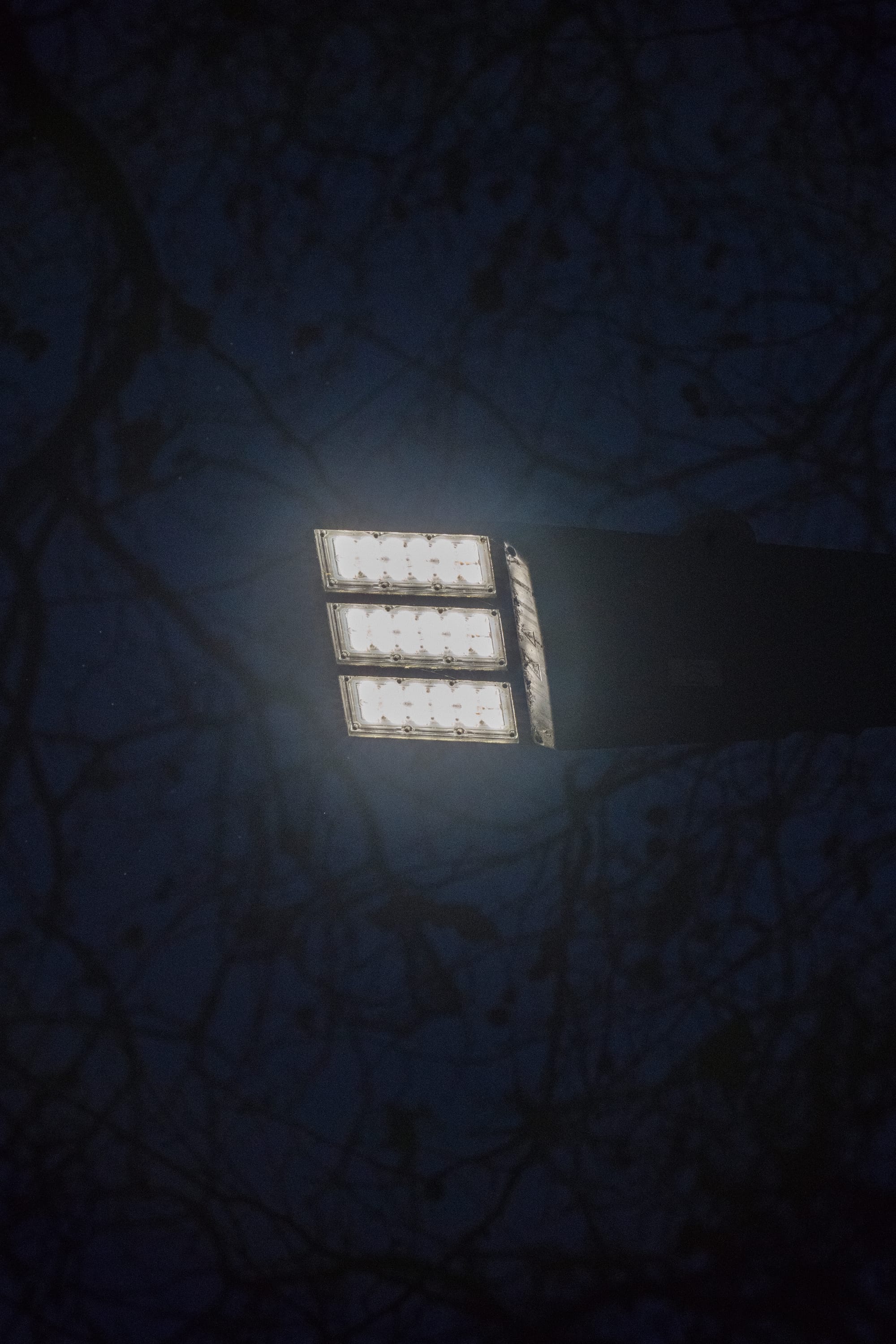
Though more ecologically efficient than incandescent bulbs, using up to 67 per cent less energy, the effects of these blue-white LEDs on both humans and animals can be severe, with evidence suggesting they disrupt melatonin production and circadian rhythms. Insect populations, in particular, seem to be dramatically impaired, with a 60% reduction in pollination rates in areas lit by blue-white lights.
In a London Assembly Environment Committee meeting, dark sky consultant Dan Oakley spoke about the mass move to white LEDs as the “real killer of dark skies,” a result of “that scattering effect, the halo effect, the sky glow that you see over cities”. In London, this was put down to street lighting, office and shop lighting, and the use of uplighting by property developers to advertise their buildings. It’s harder to quantify the effect that white light has on our mood, or how we relate to our cities. I’ve noticed that, while I sometimes welcome the extra light in a dark area of the city, more often than not this is offset by the anxiety of the white light, the throb in the temples it seems to engender, the tension in the masseter. It can make even the familiar look threatening, somehow, so that the forms of ordinary places become inhospitable and alien.
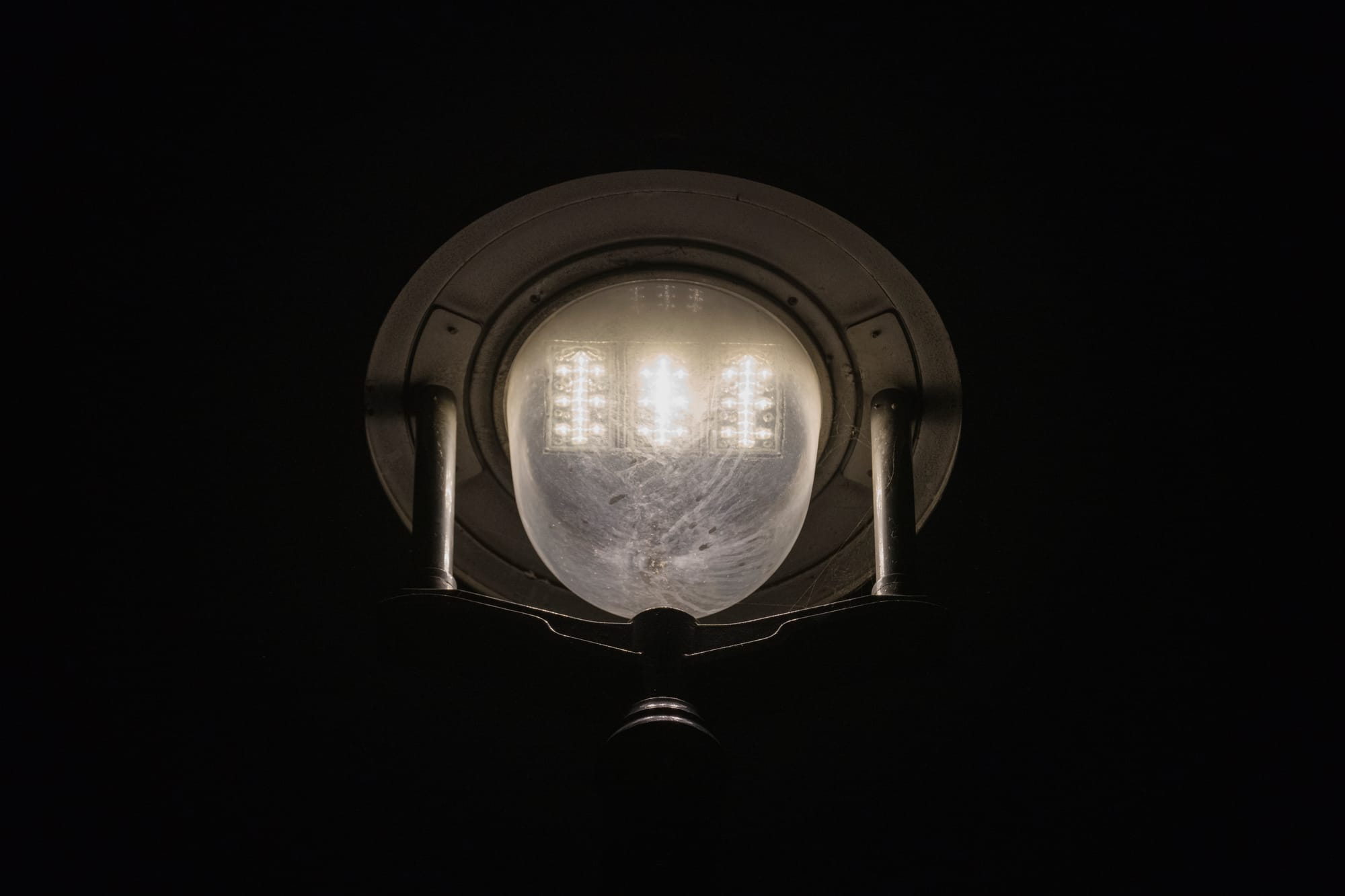
If, as historian Wolfgang Schivelbusch argues, the advent of gas lighting ushered in the industrial revolution, then it seems only logical that the advent of the LED has led to the information revolution. The contemporary propensity for white LEDs, ever brighter and more numerous, seems to match our current age of desensitised, almost hysterical numbness — think of our current social media platforms, cacophonies of light and sound barely noticed, thumbed through with mesmerised disinterest.
It’s hard to find anything romantic about the brute perfection of the LED, anything mythic; sanitised precision eliminates the chance for narrative, as does the algorithm. “A state of permanent illumination is inseparable from the non-stop operation of global exchange and circulation,” says art historian Jonathan Crary. The more that London is owned and controlled by the numbers on a computer screen, by shares and residuals and interest rates, the more the city itself becomes indistinguishable from that LED screen.
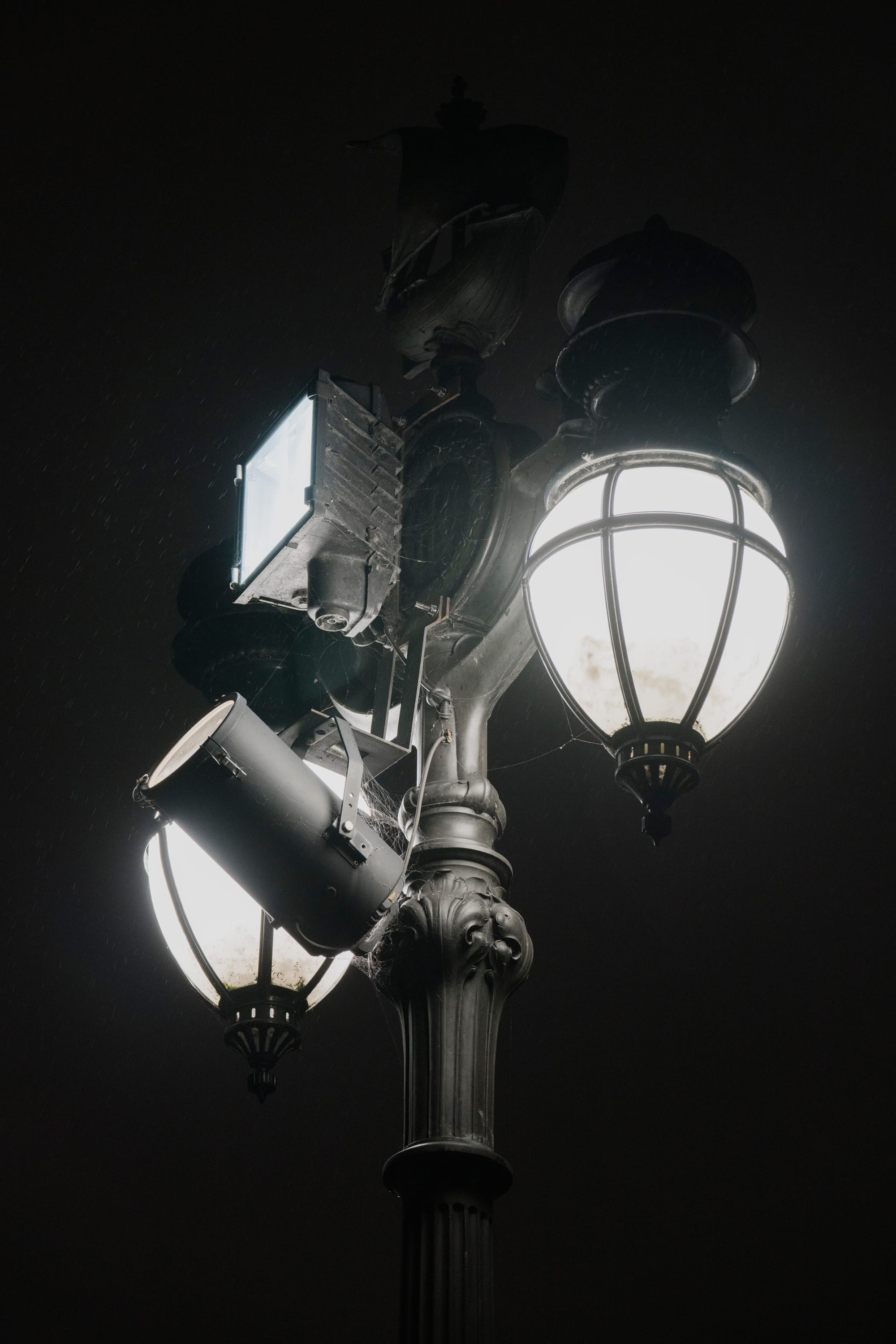
These advancements are also inextricable from the surveillance for which London has become infamous. In 2018, the City of London released its Light Strategy, created with lighting architects Speirs Major, in which the corporation outlined its intention to “fully replace and upgrade all of the existing street and amenity lighting to LED whilst retaining and enhancing the historic gas lighting and heritage lanterns”. Later in the report, in a series of suggested developments, it is cheerfully noted that an “upgrade to LED sources can help improve facial recognition”, as well as better illuminate CCTV footage.
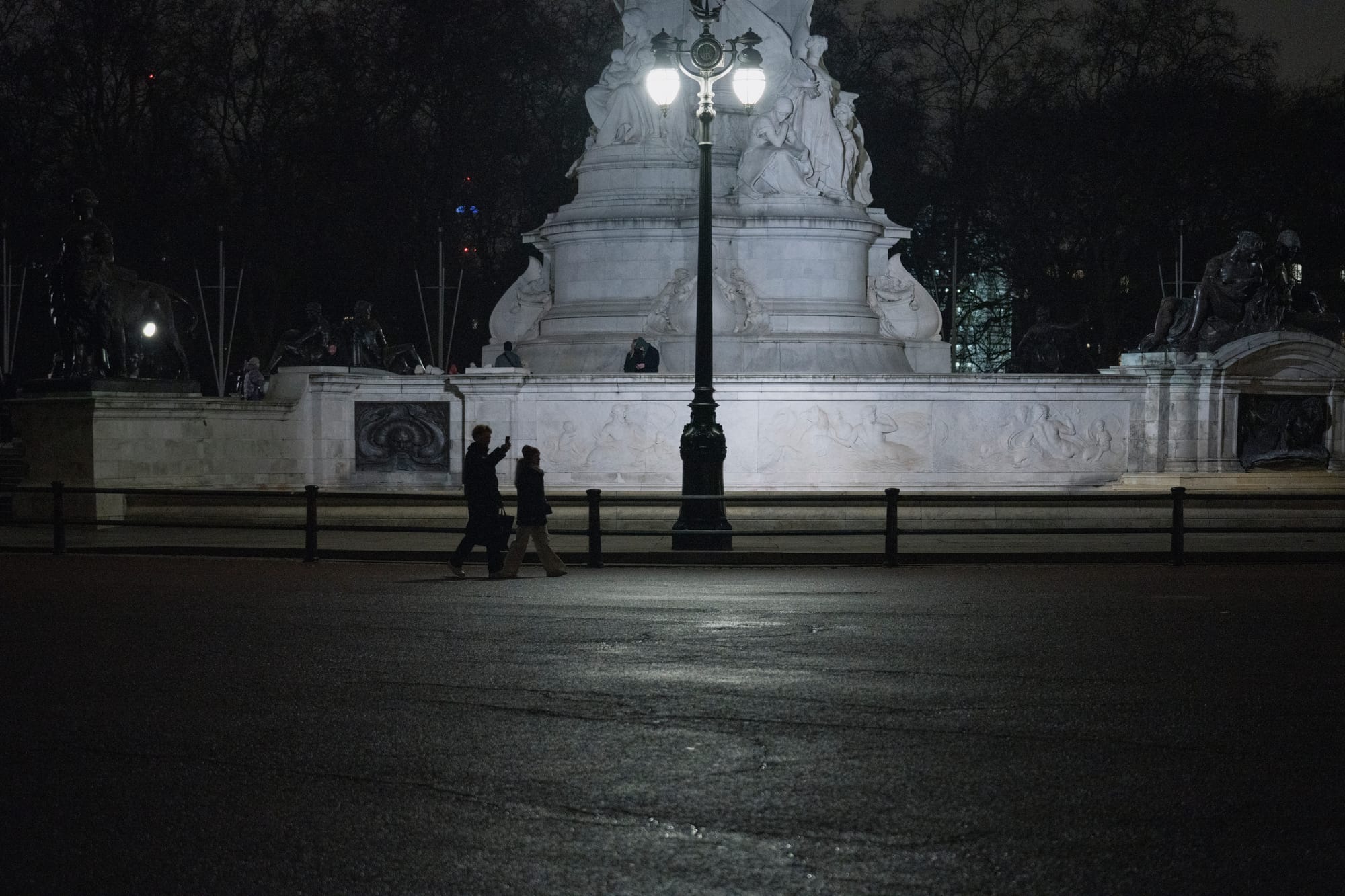
We get back in Aran’s van, the daylight nearly gone, the dusk freezing, and head to Buckingham Palace. A problem with the mains gas pipe under the road means the lights directly outside the palace gates, all wrought-iron curlicue and regal bombast, are off. It’s been this way for a decade, Aran tells me, and nobody wants to foot the bill.
Most of the other lights, including those near the fountain that seem antique, are LED, shining clinically onto the amassed tourists below. Aran describes these faux-old LED lamps as “Disney lights”. He laughs, “But when I went to Disneyland, they’ve got gas lights on the whole main street — in Orlando and Paris!”
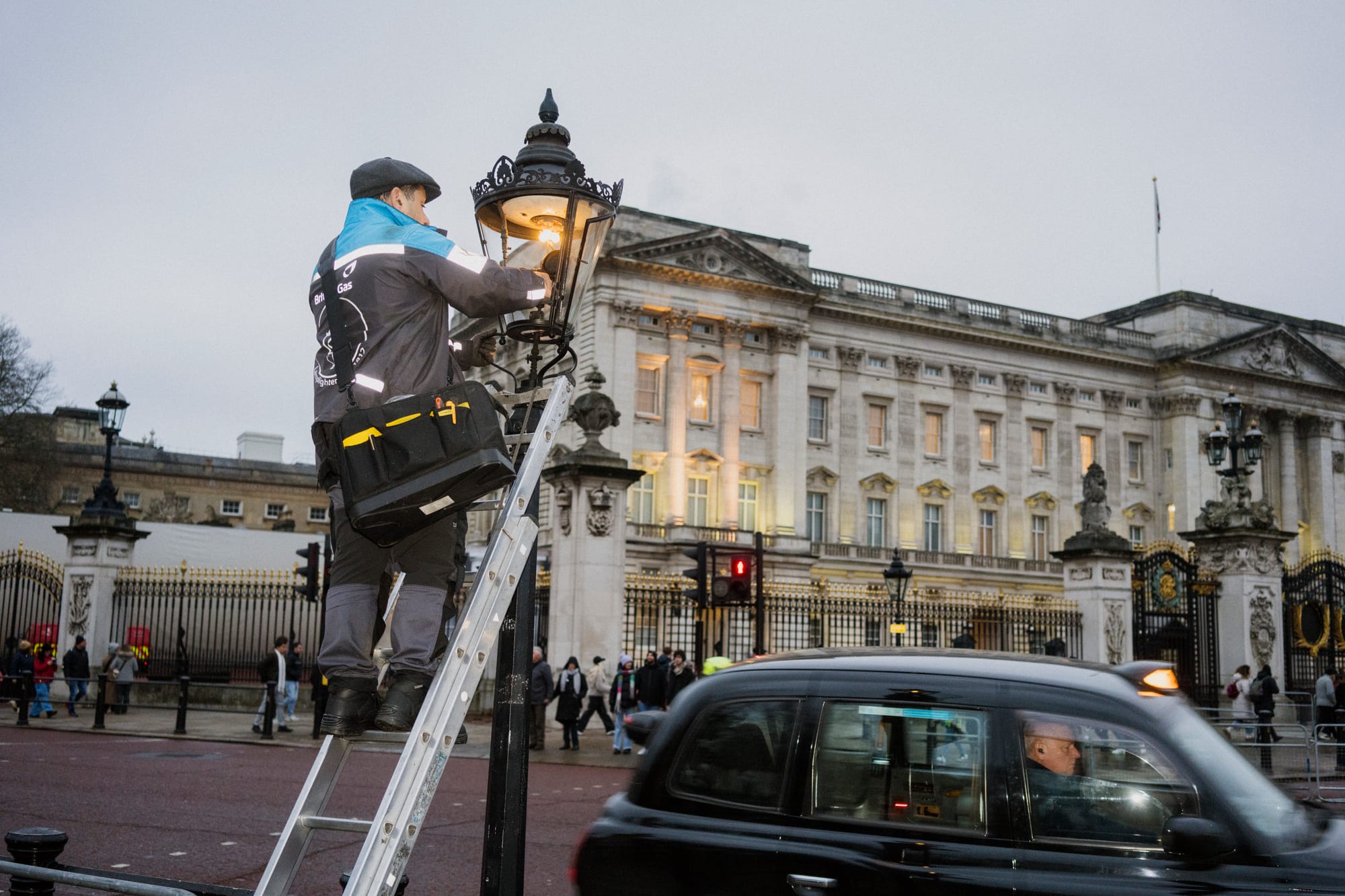
Still, there are a couple of gas lamps on the road in front of the palace, and so off Aran goes up his ladder — almost instantaneously, a crowd gathers to take photos. Set against the blue-white of the nearby LEDs, the difference in the quality of light provided by the gas lamps is even more pronounced: diaphanous and ambient, golden through the gloam.
What lies next for a city that grows ever blue, ever stark? Perhaps the lamplighters’ crusade can tell us something more profound about what, exactly, people want their city to look like, the atmosphere they want it to possess. Maybe it’s a sign that we’re finally realising how the light of our built environment affects not only ourselves but the way we relate to the people around us, affects how we engage with our city. In the City Hall committee meeting, there was talk of potential “‘curfews’ for artificial light at night from commercial and office buildings.” And so London’s complex, troubled, millennia-long relationship to the darkness, to the light, continues — perhaps right back where it began.
If you enjoyed today's edition, please forward it to friends and encourage them to join our mailing list.

Comments
How to comment:
If you are already a member,
click here to sign in
and leave a comment.
If you aren't a member,
sign up here
to be able to leave a comment.
To add your photo, click here to create a profile on Gravatar.

